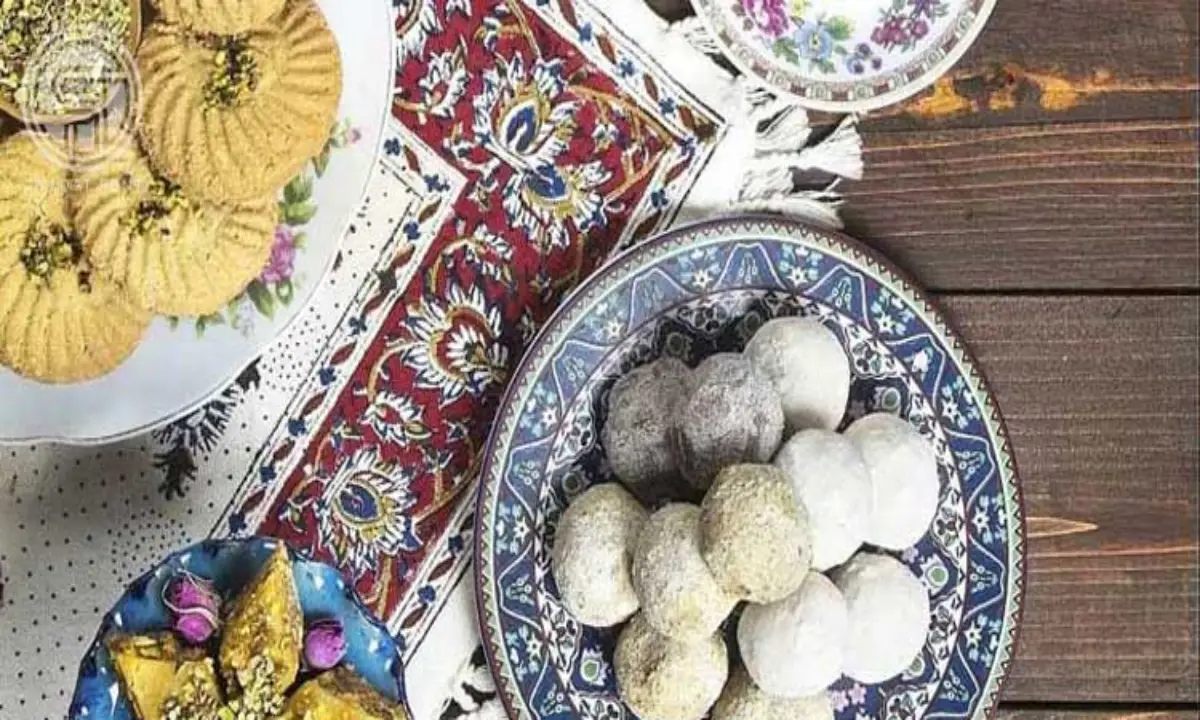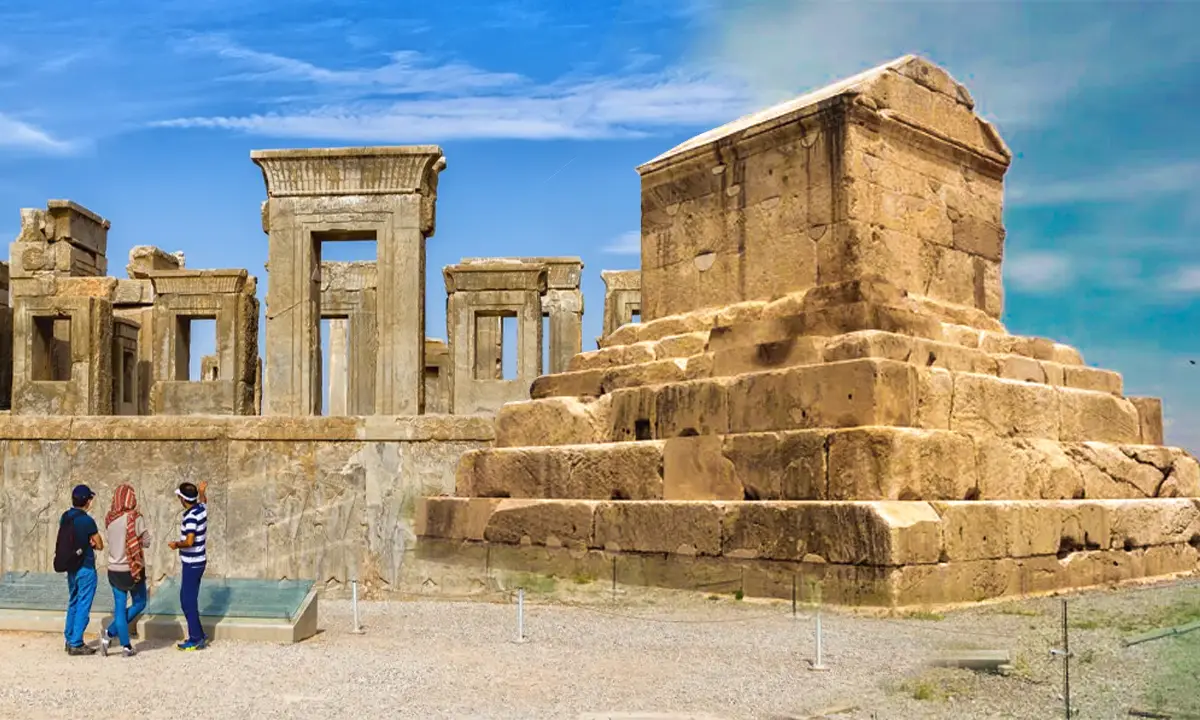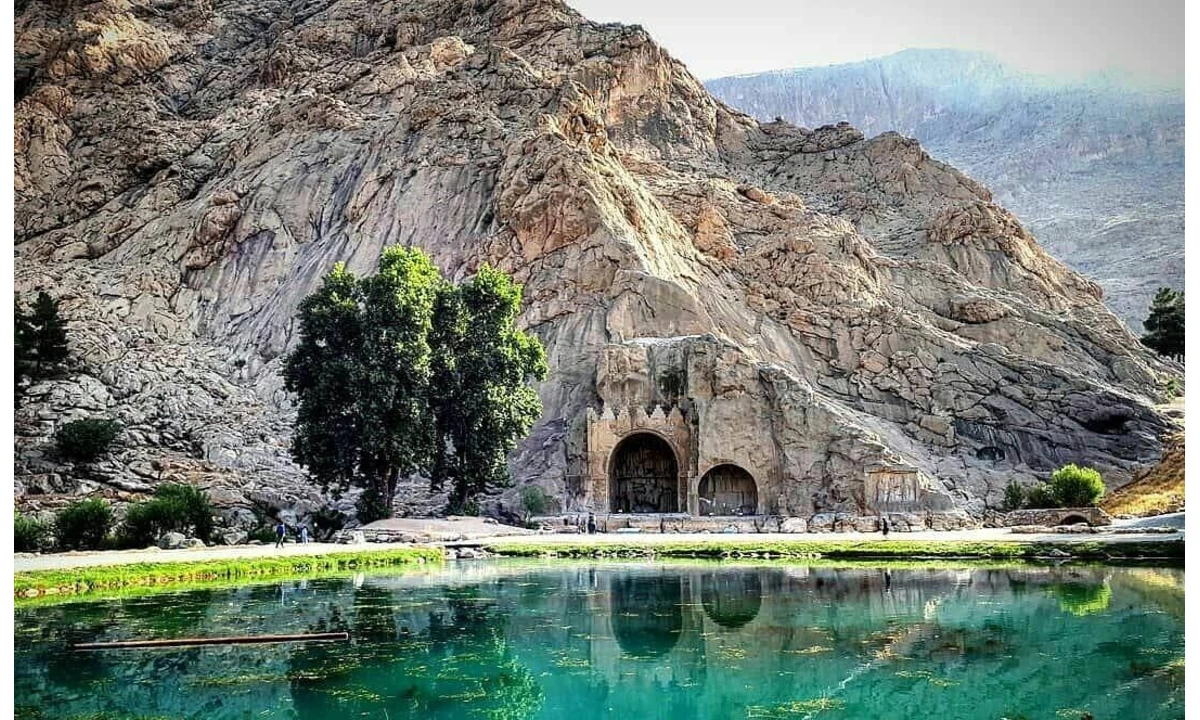Khajoo Bridge - Icon of Isfahan Historical Bridges, Iran plus Photos & Location
![]() Author : shiva | Date : Saturday 30 November 2024 16:36
Author : shiva | Date : Saturday 30 November 2024 16:36
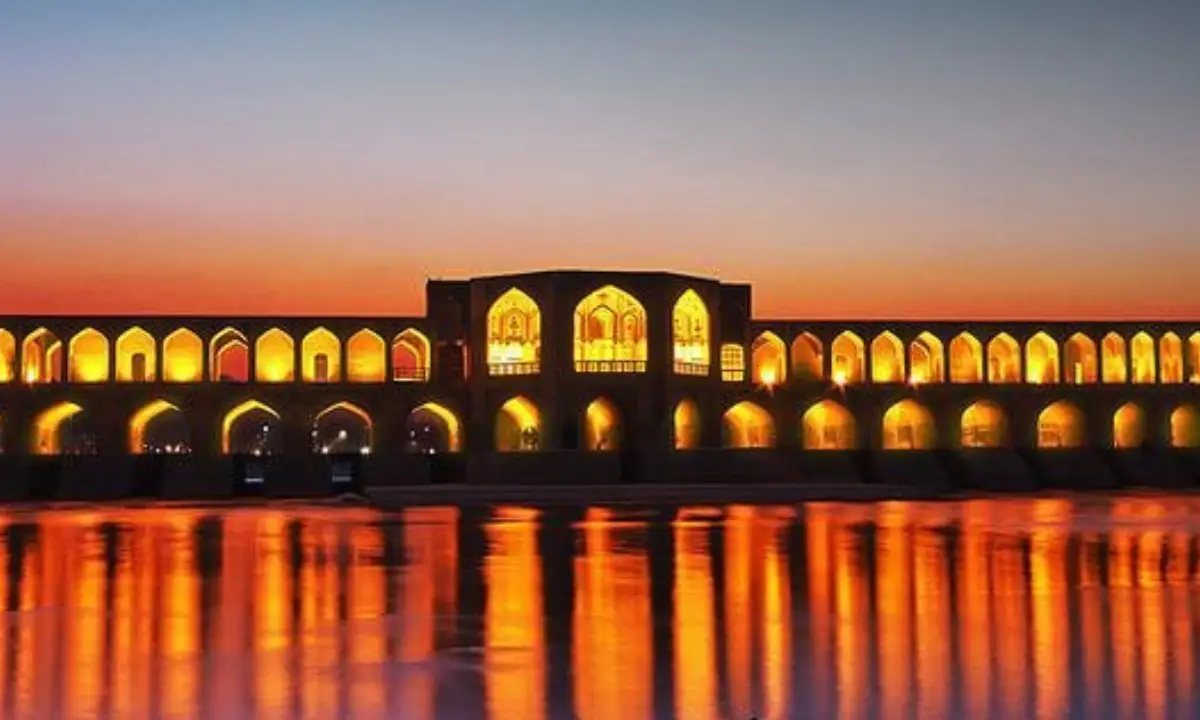
Khajoo Bridge, a testament to Shah Abbas II's era, combines a dam's functionality with majestic architecture. It stands as a pinnacle in bridge engineering, skillfully regulating Isfahan's water flow. This structure symbolizes the fusion of practicality and beauty, marking a significant achievement in Iran's historical bridges.
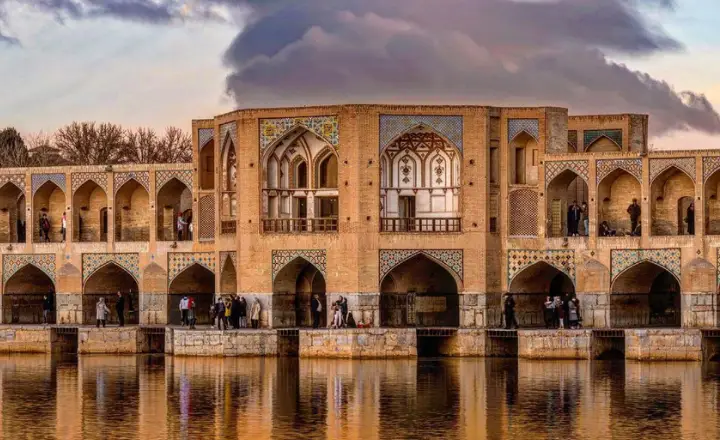
About Khajoo bridge
Khajoo Bridge is located in Isfahan and on the Zayandehrud, on the east side of Si o se pol. This bridge, which had many names throughout the ages, has become one of the eye-catching Iran attractions in terms of its symmetry, strength, and architectural style.
According to archaeologists, Khajoo Bridge has been built on a bridge that had already been destroyed. Tourists who come to Isfahan in different periods, all admire the Khajoo Bridge and have considered this place as the permanent masterpieces of Islamic and Iranian architecture.
Khajoo bridge history
Khajoo Bridge, which was one of the most beautiful bridges in the Safavid period, was built by the order of Shah Abbas II. The length of the bridge is 133 meters and its width is 12 meters, which, with many tiles and decorations, is one of the most outstanding works of Isfahan.
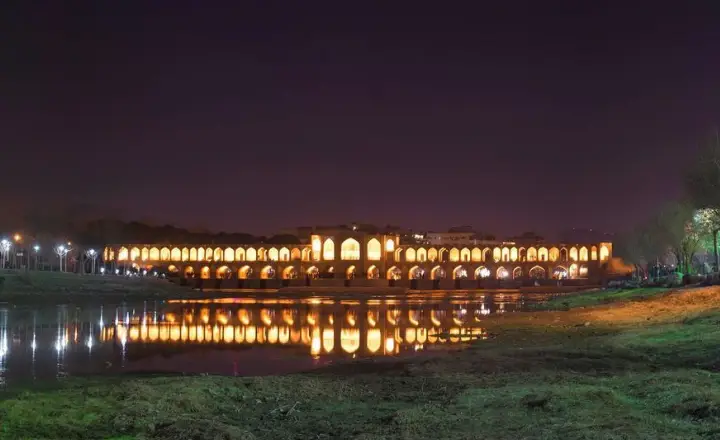
In the middle of the Khajoo bridge, a special building has been erected for the temporary residence of the king and royal family. According to historians and scholars who studied the Safavid dynasty, the purpose of Shah Abbas II for building the Khajoo Bridge was to connect two Khaju neighborhoods and the Hasan Abad gate with the Shiraz road.
✔️Read More : Isfahan Travel Guide 2024 | Things to Do in Isfahan
Khajoo bridge usage
Khajoo Bridge is a dam bridge type, and according to some, it is considered the pinnacle of the bridge industry in Iran. Khajoo bridge can raise water up to 6 meters high. It also has 16 drainage valves, with slabs in its body, as well as drains that can raise and lower the valves. By up and down the drawer, they will be able to adjust the volume of the water that flows, also these drains set the water collecting behind the bridge.
Khajoo bridge architecture
The Khajoo Bridge has 24 openings that are made of crafted cubes. Between each of the eastern and western sides of the bridge, a building has been built consisting of several rooms decorated with paintings. This building, called “Shah Neshin” or alcove, was the place of elders and emirs who were called to watch the swimming and sailing competitions on an artificial lake there. At the corners of the eastern side of Khajoo Bridge, there are two stone lions, which appear to be the protector of Isfahan in the Safavid era.
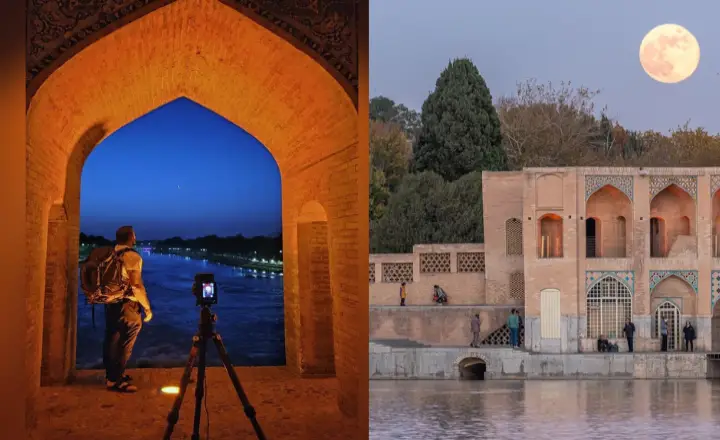
The symmetry principle in Khajoo bridge architecture
Art, science, religion, philosophy, and engineering in Iranian culture and history are full of beliefs to symmetrical phenomena and ideas. Certainly, the symmetrical forms of the artists and ancient creators’ hands have always been intentional and vigilant. Khajoo Bridge has a linear space organization that consists of repeating a series of spaces that are approximately the same size, form, and function. Under the bridge, there are 21 halls separated by spacing and connected by an intermediate space.
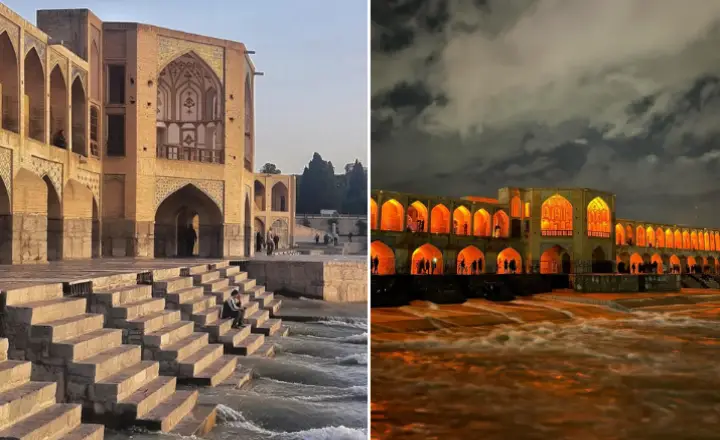
Intermediate spaces are proportional in terms of length and width, and they play an essential role, for example, to create the space required to provide light and bridge visibility.
More information about Khajoo bridge in Isfahan:
Address: Khajoo Bridge – Isfahan - Isfahan Province - Iran
Access time: 24/7 Weekend closure: None, open all week
Cost for foreign nationals: Free
Suggested visit time: About 1 hour
✔️Read More : Si-o-se-pol Bridge
Suggestions:
Nearest Tourist Attractions: In addition to Si o Se Pol, another of Isfahan's iconic bridges, visitors can explore other nearby attractions such as the Chehel Sotoun Palace and the Imam Square, showcasing the rich history and exquisite Persian architecture.
Best time to visit: Spring is the ideal time to visit the Khajoo Bridge due to the pleasant weather and the river's gentle flow, enhancing the beauty of this historic site.
Amenities:
- Access to vehicles: Limited to certain areas to preserve the tranquility and integrity of the historic structure.
- Accommodation: While there are no accommodations directly on the bridge, numerous hotels and guesthouses are available within a short distance in Isfahan city, catering to various budgets and preferences.
- Restaurant: There are no restaurants on the bridge itself, but the surrounding area boasts a variety of dining options, offering both traditional Persian cuisine and international dishes.
- Parking lot: Available in nearby areas, though spaces might be limited during peak tourist seasons. Visitors are encouraged to use public transport or taxis.
- WC: Public restrooms are available in the vicinity of the bridge, ensuring convenience for visitors.
- Network coverage: Good throughout the area, allowing visitors to stay connected and share their experiences.
- Wi-Fi: Not widely available on the bridge itself, but many nearby cafes and restaurants offer free Wi-Fi to customers.
Last Word
Khajoo Bridge stands as a timeless monument, reflecting the grandeur of Iran's rich history and architectural genius. It's not just a bridge but a historical canvas that captures the essence of Persian culture, innovation, and artistry from the era of Shah Abbas II. A visit to Khajoo Bridge offers more than a glimpse into Iran's past; it provides an immersive experience into the soul of Isfahan, making it an essential destination for every traveler interested in the depths of Persian heritage.
FAQ
Answer to a few important questions:
Can visitors access the Shah Neshin or the royal sitting area?
While the Shah Neshin was historically reserved for the royal family, today, visitors can view this area and appreciate its intricate designs and historical significance. However, access to the interior spaces may be subject to restrictions for preservation purposes.
Are there any cultural events or activities associated with Khajoo Bridge?
Khajoo Bridge and its surroundings occasionally host cultural events, including traditional music performances and festivals that celebrate Persian heritage. These events are especially prevalent during the Nowruz (Persian New Year) celebrations and other national holidays.
Is photography allowed on Khajoo Bridge?
Yes, photography is allowed and encouraged on Khajoo Bridge. The bridge's stunning architecture and the picturesque backdrop of the Zayandehrud River make it a favorite spot for photographers and visitors looking to capture the essence of Isfahan's historical beauty.

.webp)
